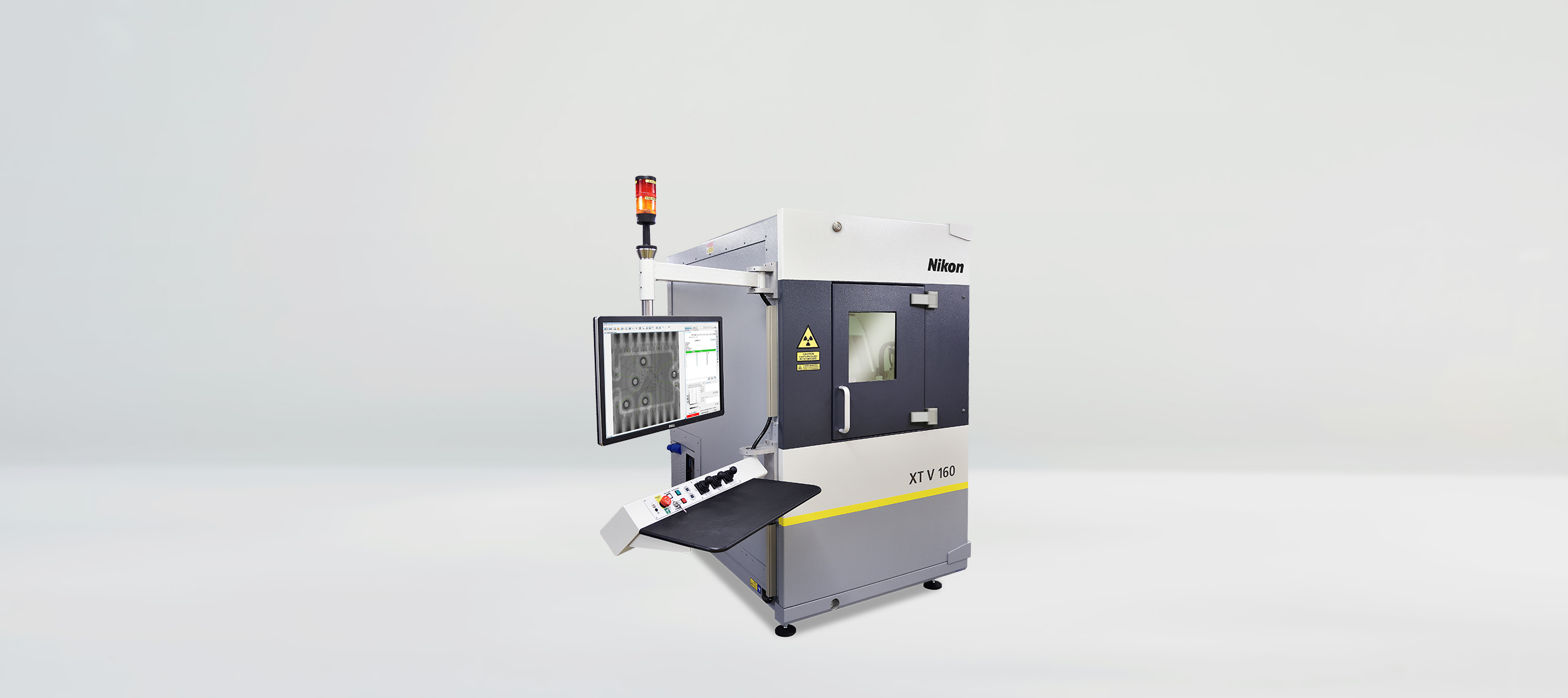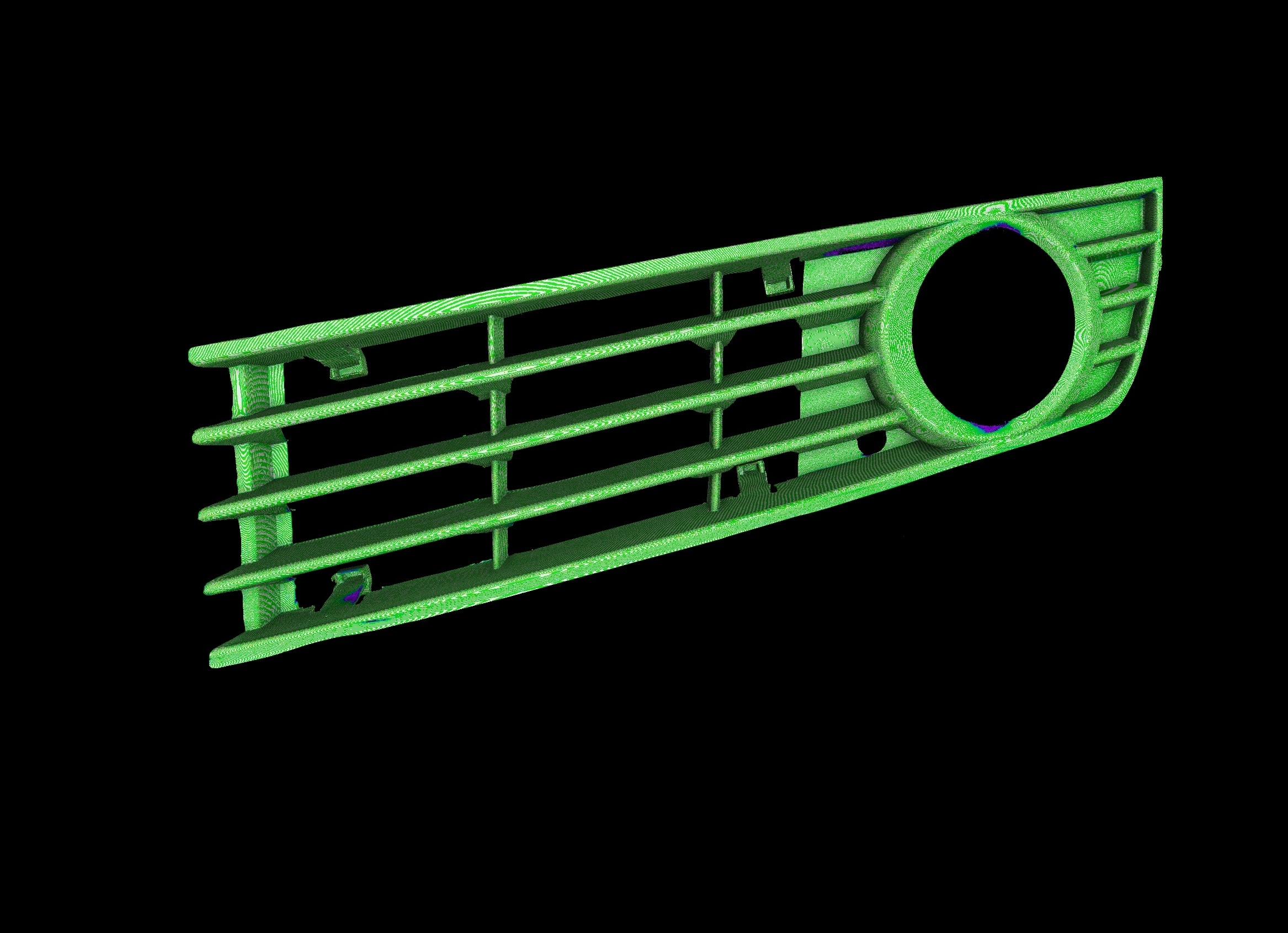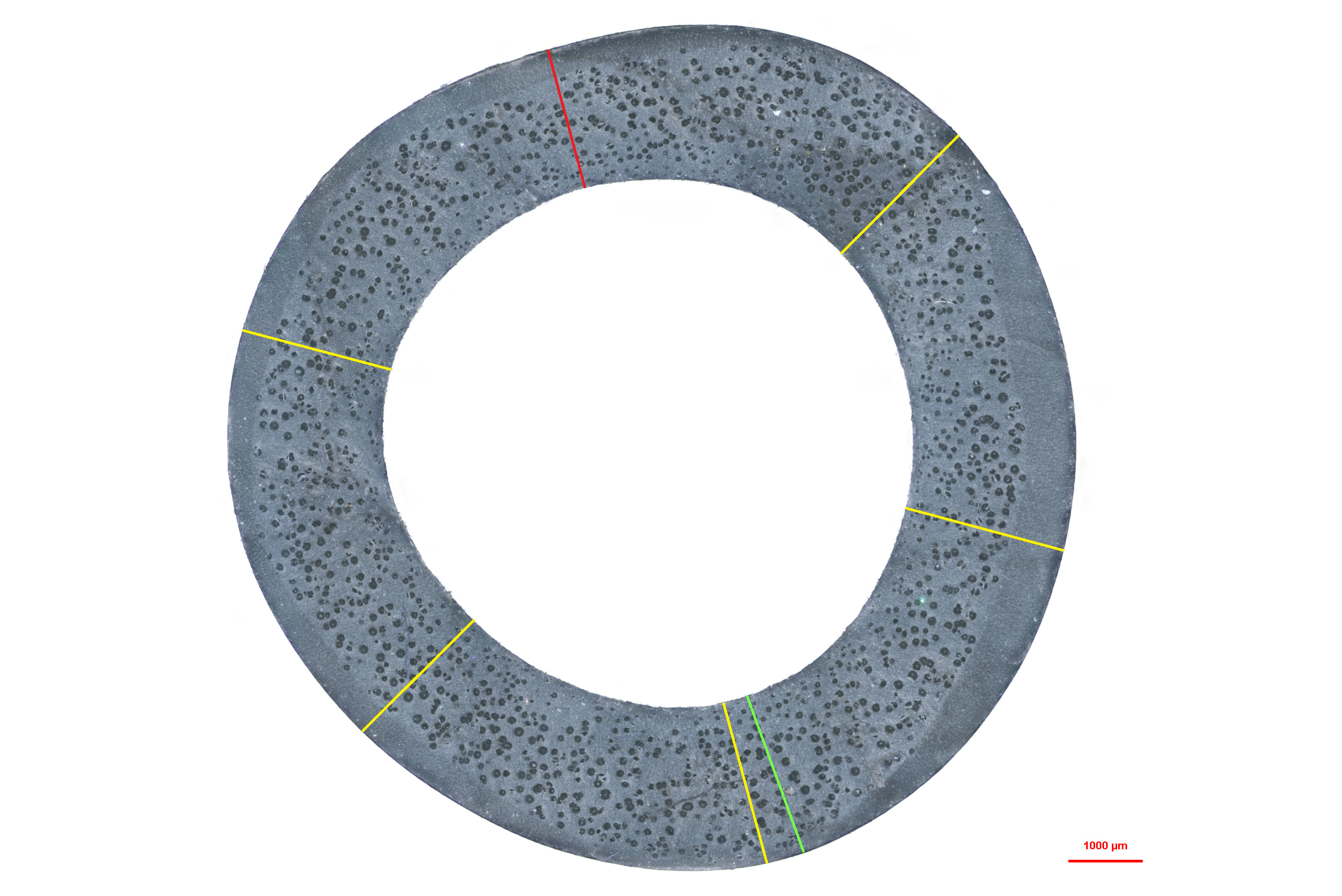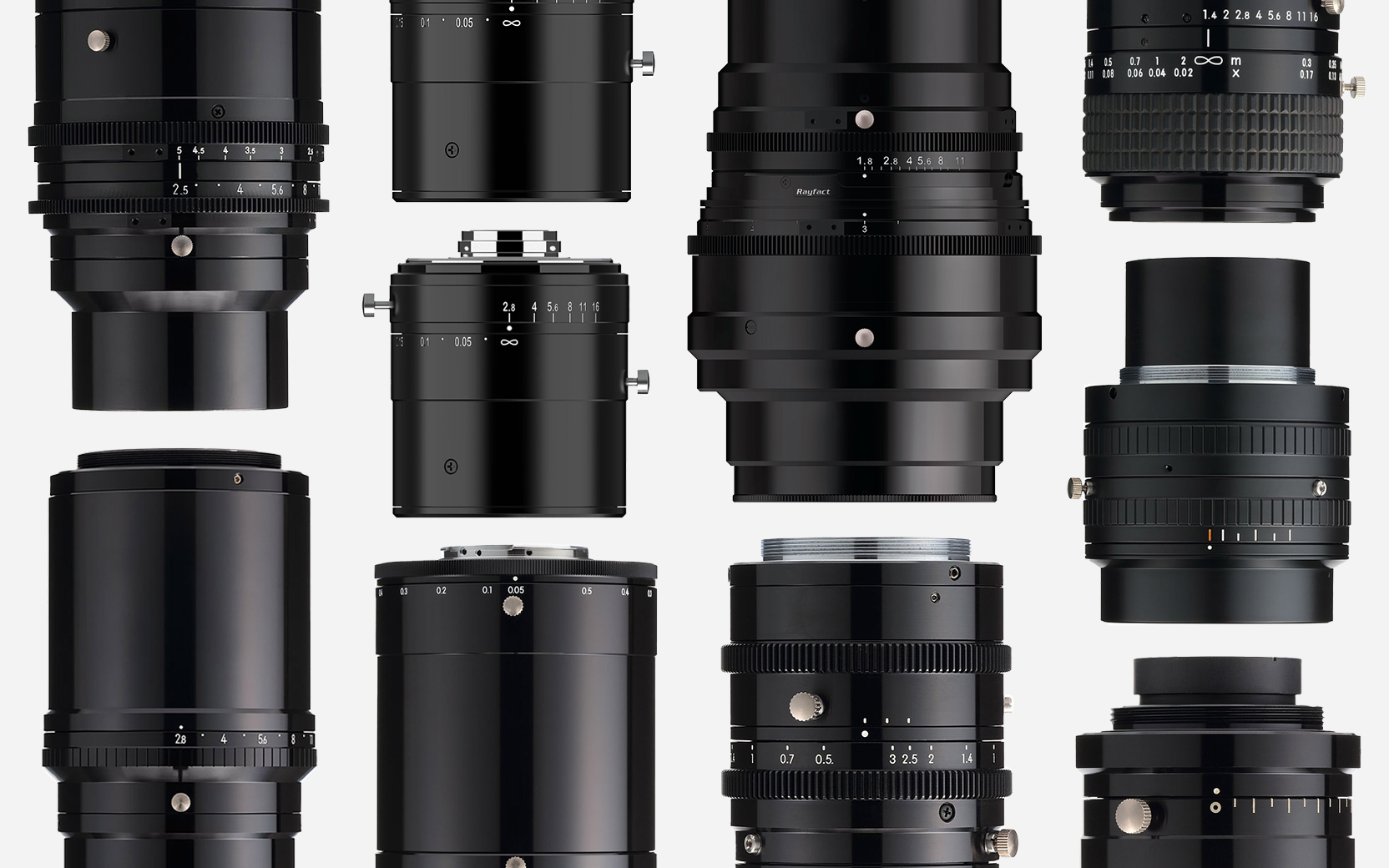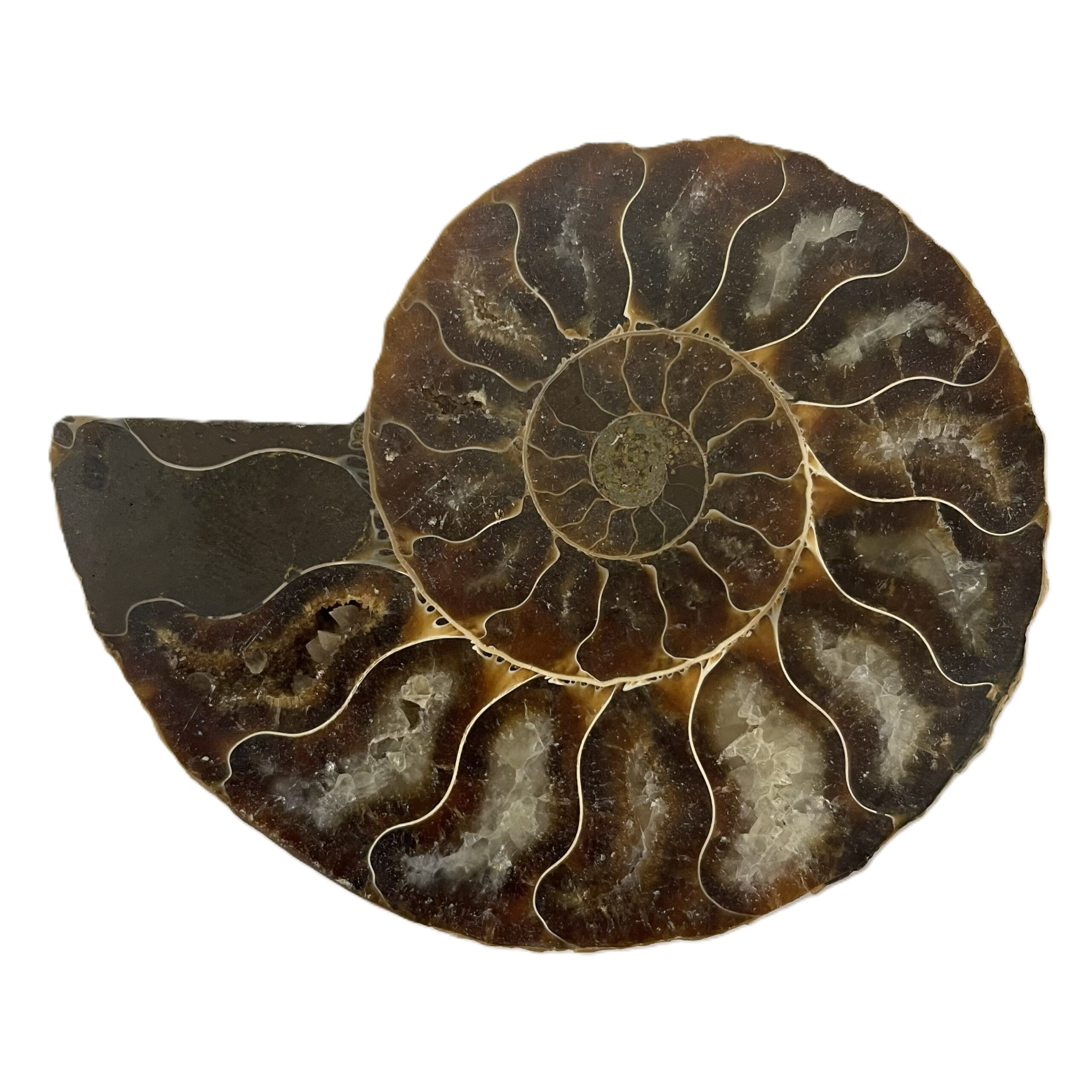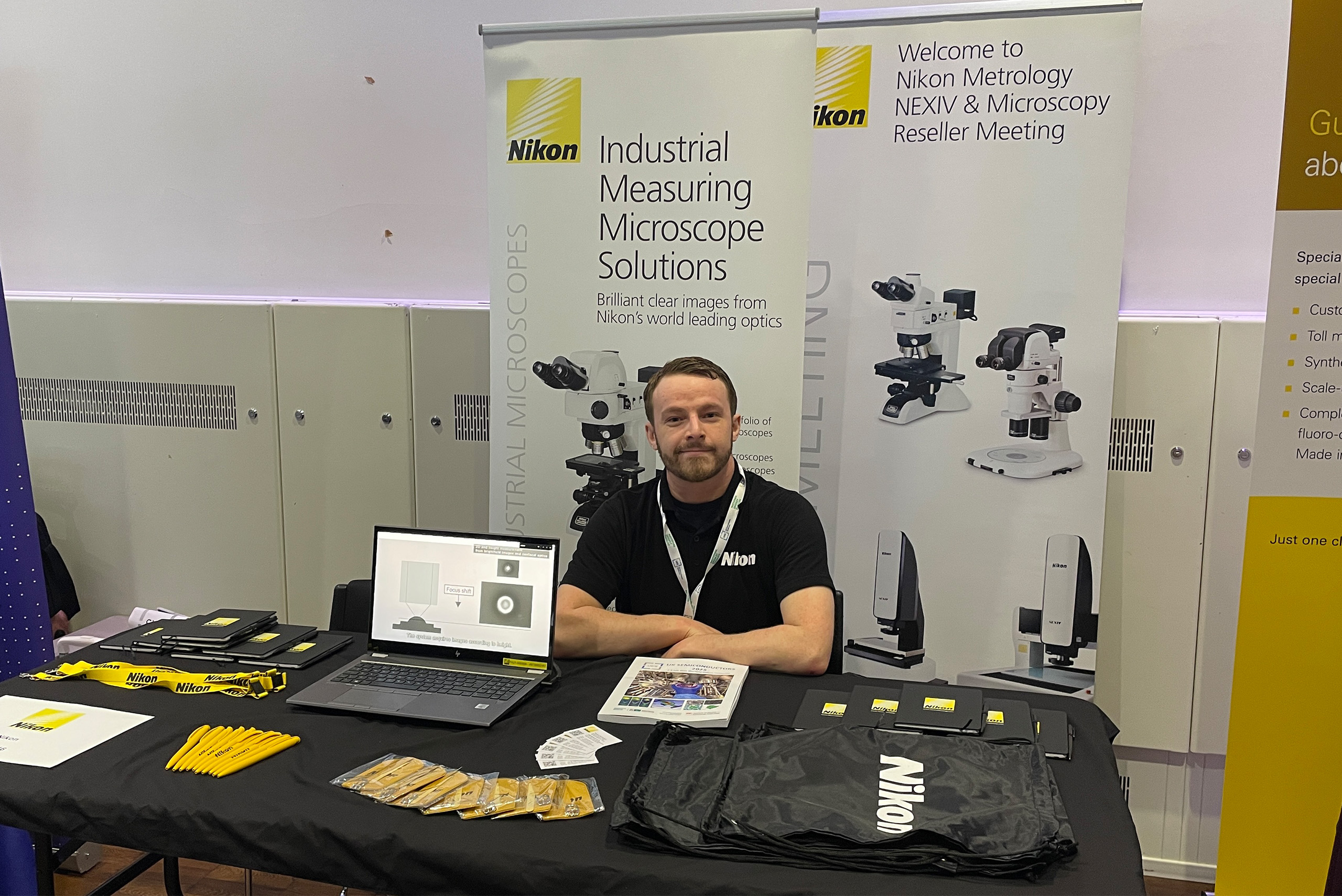We spoke to Spencer Smith, Sales manager within the Microscopy Business Unit Europe, about his responsibilities and his expertise on the Microscopy and manual measurement product range.
- Could you please tell us your responsibilities within Nikon Microscopy Business Unit, Europe?
I am responsible for the UK sales team and supporting our reseller network in Ireland, Spain, and Portugal for industrial microscopy and manual measurement applications.
Spencer Smith, on the right, with some visitors during an exhibition. - What are the best parts of your job?
Industrial microscopy can be found in many sectors from archaeology to semiconductor production which means no day is the same when discussing applications with customers. We have a large portfolio of products from stereo microscopes, compound microscopes, and manual measurement solutions. All of these products can be connected to our range of digital cameras, along with our software platform, NIS-Elements, for image analysis and E-MAX, for measurement. - Any anecdote that you would like to share with our readers?
I have been working at Nikon for more than 25 years it still amazes me how microscopy usage has changed in this short time. I can remember when capturing an image was secondary and a simple Nikon COOLPIX camera was sufficient for most customers now the camera and software are key to almost all applications! - How important is artificial intelligence to the microscopy business?
For many years, identification of defects on samples has been the responsibility of the operator and their individual skills. This can lead to variations in the results obtained and mistakes being made by incorrectly identifying defect or simply missing something critical. Artificial intelligence takes the operator out of the process producing a repeatable process that can provide better results.
Spencer Smith, on the left, with visitors at an exhibition. - Why is Automated Microscopy so important to our modern-day customer?
Our customers are looking to speed up workflow by utilising automation in microscopy routines. Light levels can be controlled with techniques such as brightfield, darkfield, polarisation and florescence, while adding motorised stages can automate image capture routines for large image stitching and multipoint imaging. These can all be controlled through software and generally using one button press routines to make sample processing faster and more efficient. - What sectors & industries can benefit from using these solutions and why?
All market sectors can benefit from these solutions. Nikon systems are modular and thus have the ability to add additional functionality in the future, which provides a cost-effective path to increase automation as or when required without the need to replace the complete system. - Why does Nikon talk about software first in developing customer solutions?
Customers no longer simply want to see the sample down the eyepieces or capture a simple image. They are looking to obtain documented results which could be images but also data which requires analysis by software. Sometimes complex macros are required to obtain the results. Critical to this is to first establish which software meets the requirements to obtain the necessary result. We then looked into identifying the necessary microscopy system to obtain the image required for analysis based on magnification required and automation of microscopy features needed. Nikon has already developed a wide range of software solutions inside the NIS-Elements platform for grain size, filter paper, auto point inspection, weld analysis to name a few.
Spencer Smith at a recent Tabletop Conference in the UK. - What is the best thing about Nikon Microscopy Solutions?
When you combine Nikon’s wide range of microscopes with image analysis using our NIS-Elements platform, it is amazing how we can automate tasks that never before could be automated. We are also utilising AI to further enhance the capabilities of our systems to allow us to create solutions which offer a one button press system. This in turn, generates the desired results every time without any operator intervention. Nikon systems are modular in design which allows systems to be upgraded as the technology advances or customers’ requirements change where additional automation or techniques are required to meet new requirements.
